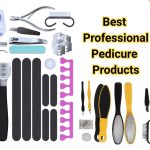As an Amazon Associate I earn from qualifying purchases.
Have you ever felt the discomfort of an ingrown toenail? If you have, you know it can be more than just a minor annoyance.
The pressing pain and swelling can make every step a challenge. You might wonder if your local nail salon can offer a solution. Nail salons are known for their expertise in beautifying our nails, but can they also relieve the pain of ingrown toenails?
This article will uncover what services nail salons can provide for this common issue. You’ll discover whether a trip to your favorite nail technician can offer the relief you need. Stay with us as we delve into what you should know before booking your next appointment. Your comfort and foot health could be just a few paragraphs away.

Credit: www.drnickcampi.com
What Are Ingrown Toenails?
Ingrown toenails occur when the nail grows into the skin, causing pain and swelling. Nail salons may offer relief by trimming the nail correctly and providing soothing treatments. Always seek professional advice for severe cases.
If you’ve ever experienced the discomfort of an ingrown toenail, you know how important it is to understand what they are and how they form. Ingrown toenails occur when the corner or side of a toenail grows into the soft flesh of your toe. This often causes pain, redness, swelling, and sometimes infection. The most common culprit is improper nail trimming. Cutting your toenails too short or rounding the edges can encourage the nail to grow into the skin. Tight-fitting shoes and injuries can also be contributing factors. You might wonder if you’re at risk.
What Causes Ingrown Toenails?
Several factors can lead to ingrown toenails. Shoes that squeeze your toes too tightly can push the nails into the skin. Fungal infections can thicken the toenails, making them more likely to become ingrown. Genetics also plays a role. If your parents had ingrown toenails, you might be more prone to them as well. It’s crucial to recognize the symptoms early. You might notice tenderness or pain along the sides of the toenail. The skin around the nail could appear red and swollen. If left untreated, the area might become infected, leading to increased pain and pus.
Should You Seek Professional Help?
You might be tempted to fix an ingrown toenail yourself, but is it the best choice? Minor cases can often be managed at home with proper care. Soaking your foot in warm, soapy water can help reduce swelling and soften the area. However, if you experience severe pain, pus, or signs of infection, consulting a professional is wise. Nail salons can offer relief, but ensure they follow proper hygiene practices to prevent further complications.
Prevention Tips
Preventing ingrown toenails can save you from discomfort. Trim your toenails straight across and avoid cutting them too short. Wear shoes that fit well and provide ample space for your toes. Consider asking yourself: Are your current shoes contributing to the problem? Adjusting your footwear could make a significant difference. By understanding the causes and symptoms of ingrown toenails, you can take proactive steps to prevent and address them effectively.
Causes Of Ingrown Toenails
Ingrown toenails can be painful and bothersome. Understanding their causes helps in prevention. Several factors contribute to this common foot problem. Let’s delve into these causes.
Improper Nail Trimming
Improper nail trimming often leads to ingrown toenails. Cutting nails too short or rounding the edges can cause them to grow into the skin. Using the right technique is crucial. Trim nails straight across and avoid cutting the corners.
Tight Footwear
Tight shoes are a common culprit behind ingrown toenails. They put pressure on toes, making nails dig into the skin. Choose footwear with enough room for your toes. Comfortable shoes reduce this risk significantly.
Genetic Predisposition
Genetic factors also play a role in ingrown toenails. Some people inherit traits that make them more prone. Nail shape or thickness might be influenced by genes. If family members have them, you might too.
Symptoms To Watch For
Recognizing the symptoms of an ingrown toenail is crucial. Early detection can prevent complications and discomfort. Here are some signs to watch for.
Redness And Swelling
Redness around the nail is often the first sign. The skin may appear swollen. This indicates the nail is growing into the flesh. Swelling often accompanies redness. It might feel warm to touch.
Pain And Discomfort
Pain is a common symptom of ingrown toenails. It usually worsens with pressure or touch. Walking or wearing shoes can cause discomfort. This pain is sharp and may throb.
Potential Infections
Infection risk increases with ingrown toenails. Pus or fluid around the nail suggests infection. The area may emit an unpleasant odor. Fever can occur in severe cases.
Role Of Nail Salons
Nail salons are popular for their pampering services, but they can also offer relief for minor foot issues. If you’ve ever wondered whether they can fix an ingrown toenail, you’re not alone. This is a common question among people dealing with this painful condition. Let’s explore what nail salons can do for you.
Services Offered
Nail salons provide a variety of services that can help with ingrown toenails. Basic pedicures include trimming and cleaning, which may prevent the toenail from digging into the skin further. Some salons offer specialized pedicures focusing on nail health. During these treatments, technicians may gently lift the nail edge and trim it, reducing discomfort.
I once had an ingrown toenail treated during a pedicure. The technician handled it with such care that I left feeling much better. Their attention to detail made a difference. However, it’s important to know the limits of salon treatments.
Limitations Of Treatment
While salons can help with mild cases, they aren’t equipped to treat severe ingrown toenails. Serious infections or deeply embedded nails require medical intervention. Nail technicians are trained for cosmetic care, not medical treatment.
If your toenail is causing intense pain or showing signs of infection, a salon visit isn’t enough. It’s crucial to recognize when you’re beyond the scope of nail care services. Ignoring this can lead to more serious issues.
When To Seek Professional Help
Do you find yourself frequently dealing with ingrown toenails? If so, it might be time to consult a podiatrist. Professional help is vital for recurring problems, excessive swelling, or pus discharge. These are signs that your condition needs more than cosmetic attention.
Have you considered the long-term effects of ignoring a painful ingrown toenail? Taking the right steps early can save you from discomfort and potential complications down the road.
Diy Methods For Relief
Dealing with an ingrown toenail can be painful. Many prefer home remedies for relief. Understanding simple DIY methods can ease discomfort and prevent further issues. These techniques can be effective with proper care and attention.
Soaking And Softening
Warm water soaks help soften the nail. Add Epsom salt for added comfort. This reduces swelling and eases pain. Soak your foot for 15-20 minutes daily. Dry your foot thoroughly after soaking. This prevents infection.
Proper Nail Cutting Techniques
Cutting nails correctly is crucial. Use clean, sharp nail clippers. Cut nails straight across to prevent ingrown nails. Avoid cutting nails too short. This can worsen the problem. File sharp edges gently to smooth them.
Use Of Over-the-counter Products
Many products can ease ingrown toenail pain. Antiseptic creams prevent infection. Pain-relief creams reduce discomfort. Toe protectors cushion the nail. These products are readily available. Follow instructions carefully for the best results.

Credit: www.youtube.com
When To Visit A Podiatrist
Nail salons offer various services to enhance nail health. But, fixing ingrown toenails can be tricky. Sometimes, a podiatrist’s expertise is needed. Understanding when to visit a podiatrist ensures proper care.
Signs Of Severe Cases
Severe pain around the toenail area signals a problem. If redness and swelling persist, it’s serious. Pus forming near the nail is alarming. Difficulty walking due to toe discomfort requires attention. These signs indicate a need for professional help.
Medical Treatments Available
Podiatrists offer treatments for ingrown toenails. Partial nail removal is common. It relieves pressure and pain. Chemical treatments prevent nail regrowth. Antibiotics combat infections. Advanced cases may need surgical intervention. These treatments ensure effective relief.
Preventive Measures
Proper nail trimming prevents ingrown toenails. Cut nails straight across. Avoid rounding the edges. Wear comfortable shoes to reduce pressure. Keep feet clean and dry. Regular foot inspections help spot issues early. These measures maintain healthy toenails.
Preventing Ingrown Toenails
Ingrown toenails cause discomfort and pain. Preventing them is important for foot health. Simple steps can help avoid this common issue.
Appropriate Footwear
Choose shoes that fit well. Tight shoes press on toes, causing ingrown nails. Opt for shoes with a wide toe box. This allows toes to spread naturally.
Avoid high heels often. They push feet forward and squeeze toes. Proper footwear reduces pressure and prevents nail problems.
Regular Nail Care
Trim nails straight across. Avoid cutting them too short. Rounded corners can lead to ingrown nails.
Use clean nail clippers. File any sharp edges to smooth them. Keep nails clean and dry to prevent infection.
Regular care keeps nails healthy. It also reduces the risk of ingrown nails.
Awareness Of Risk Factors
Know your risk factors for ingrown nails. Some people have a genetic tendency. Others may have a curved nail shape.
Foot injuries can also lead to ingrown nails. Be cautious while engaging in sports.
Stay aware of these factors. Take preventive steps to protect your feet.

Credit: www.drnickcampi.com
Frequently Asked Questions
Can Nail Salons Treat Ingrown Toenails?
Nail salons can offer temporary relief for ingrown toenails, such as trimming and cleaning. However, serious ingrown toenails may require medical attention from a podiatrist for proper treatment.
Are Pedicures Safe For Ingrown Toenails?
Pedicures can be safe for mild ingrown toenails when performed by trained professionals. It’s essential to inform the technician about the condition for careful handling.
Do Nail Technicians Remove Ingrown Nails?
Nail technicians can carefully trim and file ingrown nails to provide temporary relief. For severe cases, consulting a healthcare professional is recommended.
How To Choose A Salon For Ingrown Nails?
Choose a salon with experienced staff and good hygiene practices. Read reviews and ask about their approach to handling ingrown toenails.
Conclusion
Nail salons can offer relief for ingrown toenails. They provide basic care. But serious cases need a podiatrist. Professional help ensures proper treatment. Nail technicians can trim nails correctly. This reduces the risk of future issues. Ask your salon about their services.
Make sure they are skilled in dealing with ingrown toenails. Regular visits can help maintain foot health. Prioritize your comfort and safety. Always seek expert advice when needed. Proper care keeps your feet happy and pain-free.
Amazon and the Amazon logo are trademarks of Amazon.com, Inc, or its affiliates.







